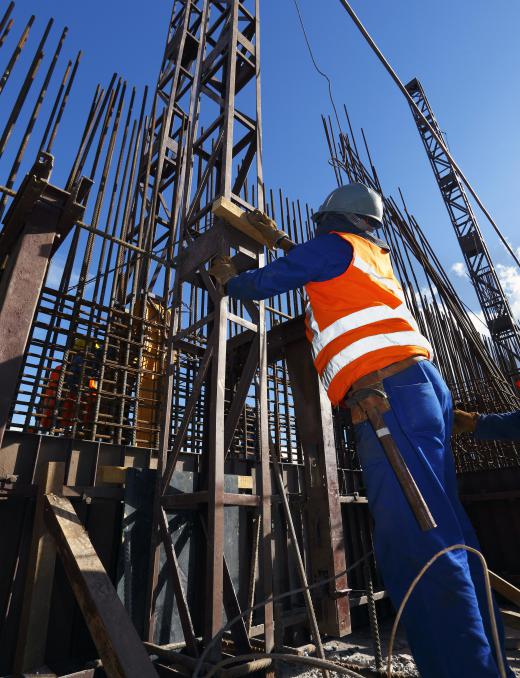A beam column is a vertical member that supports the load — weight, wind force, and seismic force — on a beam above it. This is accomplished by transferring that load downward, through the built structure, to its foundation. Beam columns have been used in building construction since ancient times. Some famous early examples of this include the Roman Coliseum and the Greek Parthenon.
Modern skyscrapers would not be possible without the use of a steel beam column system. One of the first skyscrapers using this kind of construction was in the Woolworth Building, which was built in New York City in 1913. Typically, in skyscraper framing, steel I-beams rest on columns that are H-shaped. The longer flange sides of the H-shaped column are thicker than the middle web piece. This is so that it can better withstand compression forces.

These structural framing members can be made of many different materials. As in the Parthenon and Coliseum, many older supporting columns were made of stone. In addition, wood is also often utilized for this purpose in timber frame construction. Also, concrete beam column systems are often employed to make highway bridges and other buildings.
When these supporting members are made of steel, they can have a variety of different shapes. As well as the H-shaped beam column, round and square tubular sections of steel are also often utilized. Sometimes, these hollow columns are filled with concrete, which further reinforces them.

Beam column design is usually best performed by a structural engineer. Structural engineers use complex mathematical formulas to calculate the projected column load. This helps to ensure that there are enough beam columns in the framing to support the edifice and any forces, such as wind and earth movement, that may act upon it.
In most forms of this kind of construction, special beam column connections are usually employed. In steel framing, the column is frequently welded to a steel plate, and then bolted, or riveted, to the beam. Different shapes, such as fin or flexible end plates, are often utilized.
Failure of this type of construction can result in buckling of the column. Sometimes, this can happen if faulty materials are used, or if a miscalculation is made in the load bearing capacity, among other reasons. If load is sufficiently too high for the beam column framing structure, it can collapse. This is why having this type of construction properly engineered is important.
